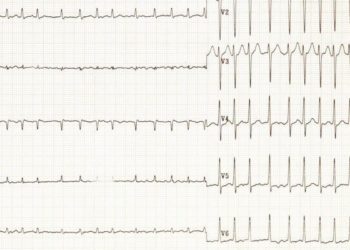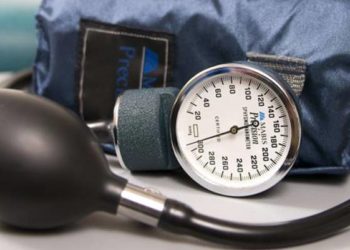Oxygenation strategies inconsequential in comatose survivors of cardiac arrest
1. In comatose patients following resuscitation for cardiac arrest, restrictive and liberal oxygenation strategies resulted in similar rates of death, severe disability, and coma.
2. Adverse event incidence was comparable in patients treated with either restrictive or liberal oxygenation strategies.
Evidence Rating Level: 1 (Excellent)
Study Rundown: During cardiac arrest, the brain undergoes ischemia and hypoxia. Upon resuscitation and recovery of circulation, reperfusion with liberal oxygenation may result in further injuries as hyperoxia occurs in nervous tissue. A more restrictive oxygenation target could potentially avoid this adverse outcome. Nevertheless, this strategy risks worsening hypoxia and further ischemic damage. The evidence so far has been equivocal regarding the advantages of either approach. The current study was an open-label randomized trial with a 2-by-2 factorial design where patients comatose from a cardiac arrest were assigned to receive a restrictive or a liberal oxygenation regimen and to one of two blood pressure targets. By 90 days, it was found that the different oxygen targets resulted in similar incidences of death, severe disability, and coma at discharge. The median neuron-specific enolase levels, a marker of neurologic damage, were also comparable between the two oxygenation regimens. The open-label design might have introduced bias surrounding decisions about the withdrawal of life-sustaining therapies which, however, followed a pre-defined algorithm. The trial results demonstrated no significant difference between restrictive or liberal oxygen targets in the incidence of death, severe disability, or coma.
Click here to read the study in NEJM
In-Depth [randomized controlled trial]: The current study reported on a portion of an open-label randomized trial with a 2-by-2 factorial design where patients comatose following resuscitation from an out-of-hospital cardiac arrest were assigned to receive a restrictive or a liberal oxygenation regimen and to one of two blood pressure targets. The results focused on the impact of oxygenation targets on patient outcomes. Specifically, 789 patients were randomized 1:1 to a restrictive oxygen target of partial pressure of arterial oxygen (PaO2) of 9 to 10 kPa (68 to 75 mmHg) or a liberal oxygen target of a PaO2 of 13 to 14 kPa (98 to 105mmHg). The primary outcome was the composite of death from any cause, or hospital discharge with severe disability or coma, as assessed by Cerebral Performance Category (CPC) at 90 days. Secondary outcomes included components of the primary composite outcome, disability assessments by Montreal Cognitive Assessment, modified Rankin scale, and the levels of neuron-specific enolase at 48 hours. Overall, at 90 days, the primary outcome occurred in 32.0% of patients in the restrictive-target group and 33.9% in the liberal-target group (hazard ratio, 0.95; 95% Confidence Interval, 0.75 to 1.21; p=0.69). Death occurred in 29.7% of the restrictive-target group and 31.1% of the liberal-target group. The median CPC category for the surviving patients was one for both groups (lowest severity). The Montreal Cognitive Assessment and modified Rankin scale scores were also similar between the two groups. The median levels of neuro-specific enolase were 17µg/L and 18µg/L for the restrictive-target and liberal-target groups, respectively. The rates of adverse events such as infection, bleeding, and seizures were comparable as well. Despite the limitations of an open-label design and the impact of pandemic restrictions on some outpatient assessments, the trial demonstrated that for comatose survivors of cardiac arrest, there was no significant difference imparted by either a restrictive or liberal oxygenation regimen in the risk of death, disability, and coma by 90 days.
Image: PD
©2022 2 Minute Medicine, Inc. All rights reserved. No works may be reproduced without expressed written consent from 2 Minute Medicine, Inc. Inquire about licensing here. No article should be construed as medical advice and is not intended as such by the authors or by 2 Minute Medicine, Inc.







